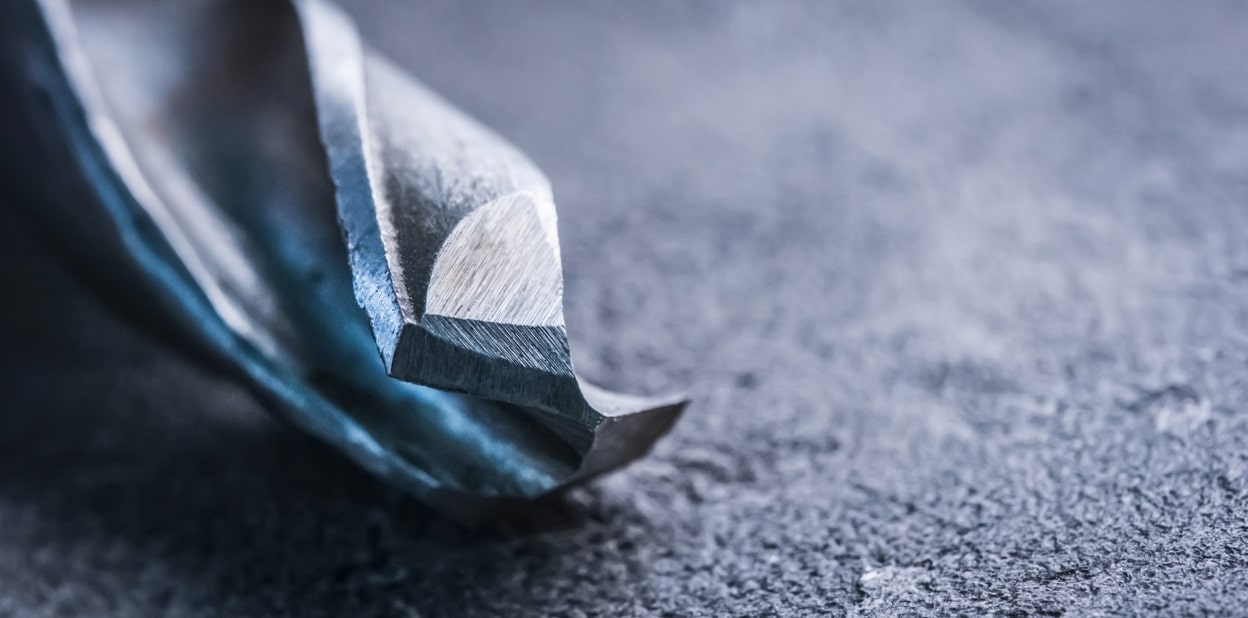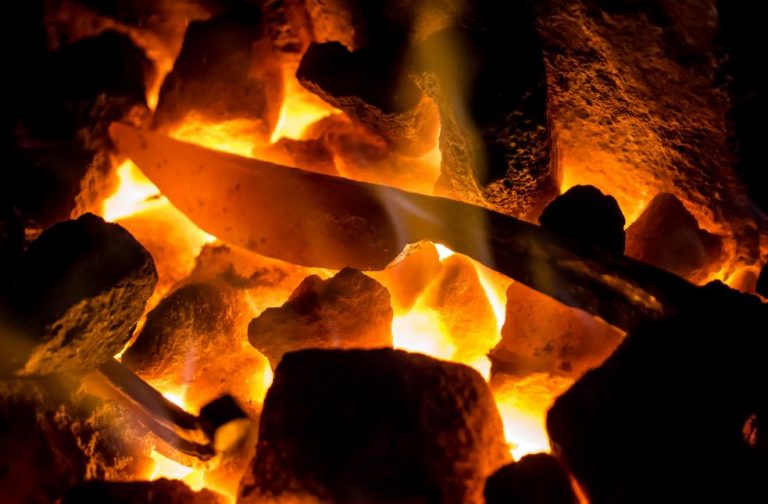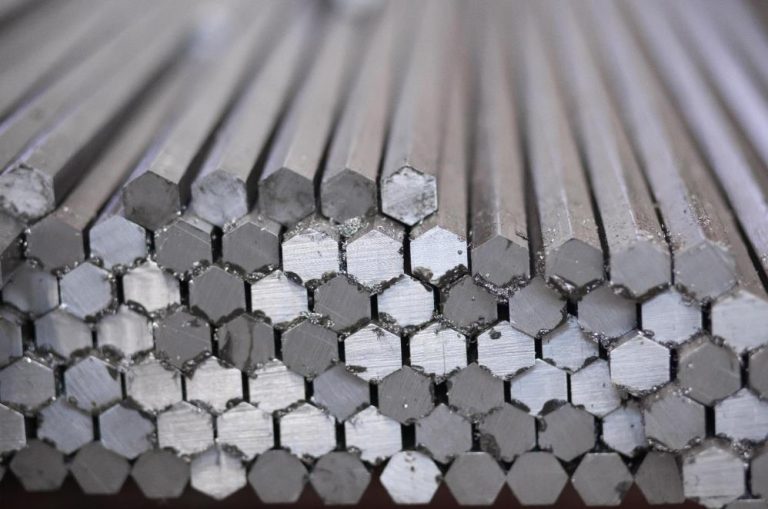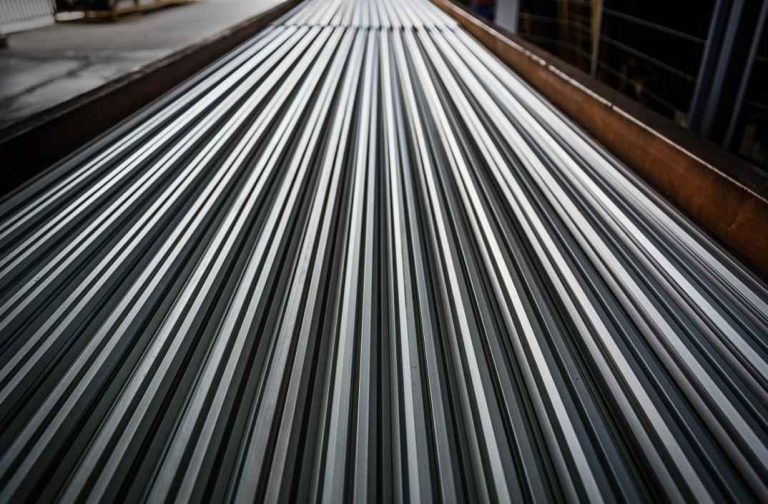A2 steel stands as a versatile and widely used air-hardening tool steel that is characterized by good toughness and excellent dimensional stability in heat treatment. A2 steel is especially known for its balance between hardness and toughness, making it a popular choice for making a variety of tools.
When you are selecting steel for your project, it’s important to understand the properties that distinguish A2. The alloy contains substantial amounts of chromium, molybdenum, and vanadium which contribute to its ability to resist wear. This wear resistance property extends the life of tools made from A2 steel, which can be an economical choice in the long term. Additionally, its air-hardening property eliminates the risks associated with water-hardening steels, thus reducing the possible occurrence of cracking during the heat-treating process. To learn more about how A2 steel performs as a relatively old steel in a modern industry, read more below.
What is A2 steel?
A2 steel emerged in the early 20th century as part of the “A” series of tool steels, designed for air-hardening through a stable austenitizing process. Known for its well-balanced combination of toughness and wear resistance, A2 steel is a preferred choice in tool making. It finds frequent application in crafting punches, dies, and various high-precision tools.
Despite being employed for knife-making in the last century, A2 steel has experienced a gradual and understandable decline in popularity. Its most prevalent use today can be observed in EDC (Everyday Carry) pocket knives, often subjected to direct comparisons with CPM-S3V.
Buy Wholesale Knives and Start Scaling up with Us Today
Contact us and connect with a sales rep to get a free quote.
Chemical composition of A2 steel
When you assess the chemical composition of A2 steel, you’ll notice that Carbon (C), Chromium (Cr), Manganese (Mn), Molybdenum (Mo), Vanadium (V), and Silicon (Si) are present in the following typical percentages:
- Carbon (C): 0.95-1.05%
- Chromium (Cr): 4.75-5.50%
- Molybdenum (Mo): 0.90-1.40%
- Vanadium (V): 0.20-0.25%
- Nickel (Ni): 0.30%
- Manganese (Mn): 0.60-1.00%
- Silicon (Si): 0.30-0.50%
- Copper (Cu): 0.25%
- Phosphorus (P): 0.03%
- Sulfur (S): 0.03%
By examining the chemical composition of this steel, you can conclude that A2 is not classified as stainless steel, and it has an adaptable hardness. Your familiarity with the chemical makeup is crucial for understanding the characteristics of A2 steel.
A2 steel performance
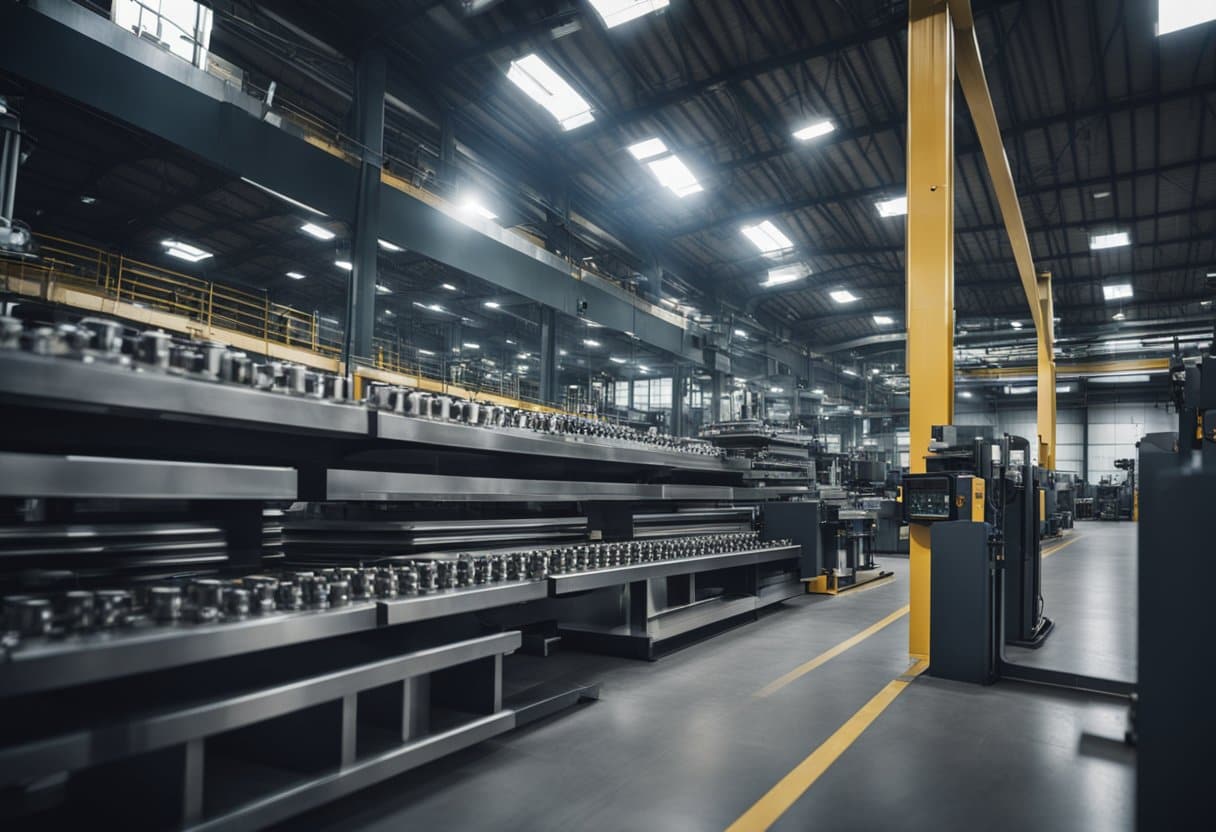
A2 tool steel is recognized for its balanced matrix of properties, offering you an optimal blend of toughness, wear resistance, and hardness. The steel’s composition affords it a good measure of dimensional stability during heat treatment, enhancing its precision in tool-making.
Toughness
Your A2 steel tools maintain high toughness, which is the ability to absorb energy and deform plastically before fracturing. Compared to other tool steels, it offers superior impact resistance, a critical factor for tools subjected to sudden or unpredictable stresses.
Hardness and edge retention
A2 steel typically achieves a Rockwell hardness of 58-62 HRC after proper heat treatment. This hardness level translates to adaptable edge retention. A2 steel can sustain sharp edges for prolonged periods, reducing the frequency of sharpening needed to maintain performance.
Corrosion resistance
While A2 tool steel is not stainless, it offers moderate resistance to corrosion due to its high chromium content. However, you should still maintain and store A2 steel tools properly to prevent rust.
Given its harness, it might require more effort to sharpen; however, the steel is less likely to wear away during sharpening, providing stability and long-term precision.
A2 steel alternatives
In this section, you will explore the distinct characteristics of A2 tool steel when compared to other types of tool steels, focusing notably on D2 and O1 steels. Understanding these differences is crucial for selecting the appropriate material for your specific tooling needs.
A2 tool steel is known for its balance between toughness and wear resistance. Its composition allows for deep hardening, and it is an air-hardening tool steel, which means it hardens in air with low distortion, unlike some other tool steels which may require more complex treatment processes.
D2
D2 is a high-carbon, high-chromium steel known for its high wear resistance and ability to retain a cutting edge. However, D2 can be more brittle than A2, making A2 advantageous where impact resistance is critical. D2 also has a slightly higher chromium content which gives it some stainless properties, although it is not classified as stainless steel.
CPM S3V
The two steel are quite similar in a lot of ways. CPM 3V steel, a high-alloy, powdered metallurgy tool steel, excels in toughness and impact resistance. It contains significant amounts of vanadium and molybdenum, enhancing its wear resistance and overall durability. Moreover, CPM 3V demonstrates improved corrosion resistance compared to A2, thanks to its higher chromium content. While A2 may be favored for its versatile performance in precision tools, CPM 3V stands out in applications where heightened strength and resistance to harsh conditions are paramount, choosing between the two dependent on specific use cases and priorities.
Buy Wholesale Knives and Start Scaling up with Us Today
Contact us and connect with a sales rep to get a free quote.
Heat treatment process
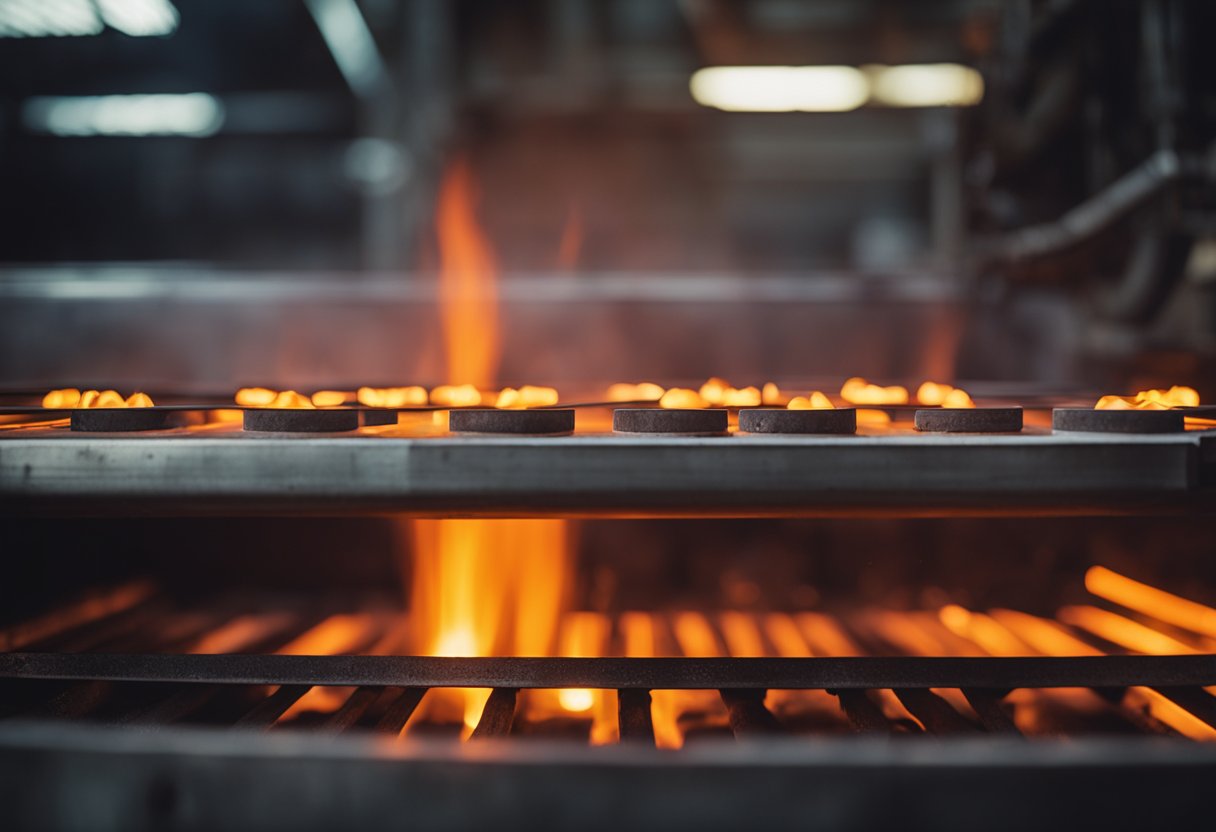
The heat treatment of A2 steel is a vital process that tailors its mechanical properties to make it suitable for tool use. This treatment involves controlled heating and cooling, affecting the steel’s hardness and toughness.
Austenitizing and quenching
During austenitizing, A2 steel requires a temperature range of 1500-1550°F (816-843°C). At this high heat, the steel’s structure becomes austenitic. Once the steel has been held at this temperature (a process known as soaking) for an appropriate time to ensure uniform temperature throughout the material, it is then quenched rapidly. Typical mediums for quenching A2 steel, an air-hardening steel, include still air or a forced air blast system. The quenching phase results in a hard yet brittle structure.
Tempering
After quenching, the steel must undergo tempering. This step involves reheating the steel to a lower temperature, usually between 300-1000°F (149-538°C), depending on the desired level of hardness. The process of tempering is crucial as it reduces brittleness and improves toughness by allowing some of the martensite formed during quenching to transform into tempered martensite. It is common to temper A2 steel twice to ensure maximum toughness, each time allowing it to cool in still air.
Annealing
Annealing is another heat treatment process that aims to soften the steel, making it easier to machine and relieving internal stresses. To anneal A2 steel, you should heat it uniformly to a temperature of approximately 1600°F (871°C), hold it long enough to allow transformation, then slowly cooling it in the furnace at a rate of about 40°F (22°C) per hour until you reach 1000°F (538°C). After reaching this temperature, the steel can then be cooled to room temperature at any desired rate. Properly annealed A2 steel will have a structure that is soft enough to be worked but can be hardened again if necessary.
Should you invest in A2 steel?
A2 steel is a versatile air-hardening tool steel characterized by good toughness and excellent dimensional stability in heat treatment. When considering A2 steel for your knife business, evaluate both the benefits and any potential drawbacks.
Pros
- Toughness: The steel is relatively tough in its price range, without trading off much of its hardness.
- Easy to heat treat: A2 steel proves forgiving during the heat treatment process, allowing for some margin of error. This characteristic makes working with A2 steel less problematic during the manufacturing phase.
Cons
- Less favorable in the modern landscape of knife steels: A2 steel, while a durable workhorse, belongs to an older generation of steels. Numerous innovations that have surfaced since its introduction outperform A2 steel, making it less desirable in the context of contemporary knife materials.
A2 steel is a great starting steel
While A2 steel may not boast the superlative qualities found in some of the super crucible steels, it holds its own unique charm. The undeniable cost advantage further positions A2 as an excellent starting point for brands venturing into the realm of knife production.
Aspiring manufacturers seeking a reliable steel to kickstart a new line will find A2’s blend of durability and affordability appealing. For those considering A2 for their knife production needs, partnering with a reputable manufacturer is crucial.
At LeeKnives, we take pride in our expertise in working with A2 steel, offering not only quality products but also valuable insights into our heat treatment and manufacturing processes. Contact our dedicated sales representatives to explore how LeeKnives can assist you in bringing your knife production vision to life. Discover the art and science behind our knives, and let’s embark on the journey of crafting exceptional blades together.
